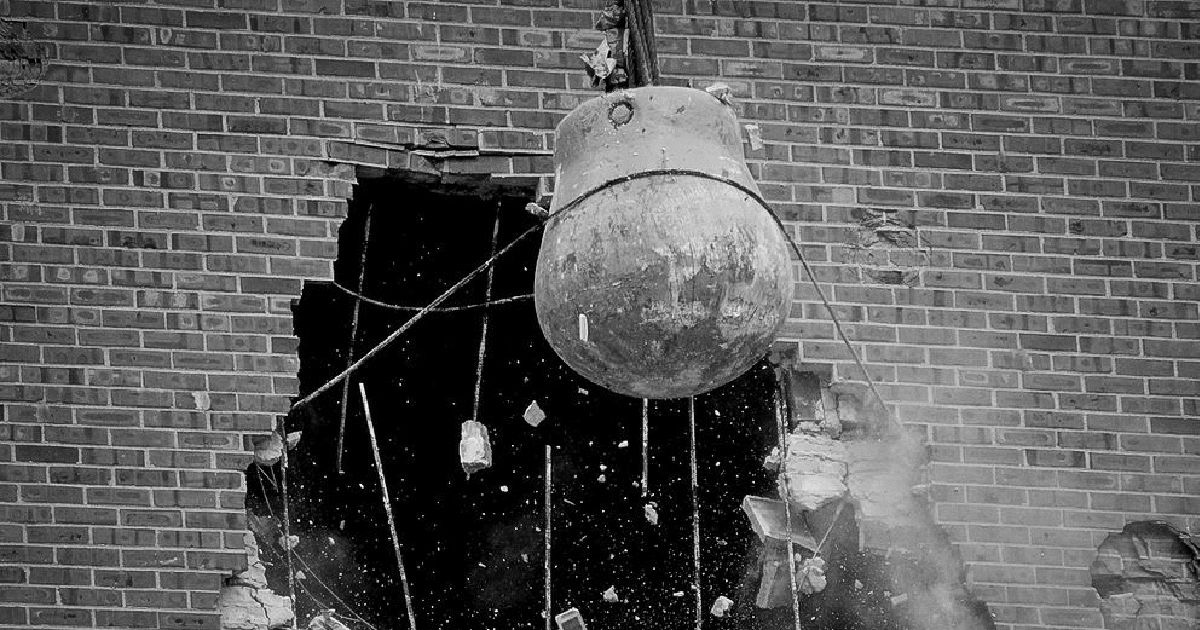When people talk about the economy, they generally focus on government policies such as taxation and regulation. For instance, Republicans credit Pres. Trump’s tax cuts for the seemingly booming economy and surging stock markets. Meanwhile, Democrats blame “deregulation” for the 2008 financial crisis. While government policies do have an impact on the direction of the economy, this analysis completely ignores the biggest player on the stage – the Federal Reserve.
You simply cannot grasp the economic big-picture without understanding how Federal Reserve monetary policy drives the boom-bust cycle. The effects of all other government policy work within the Fed’s monetary framework. Money-printing and interest rate manipulations fuel booms and the inevitable attempt to return to “normalcy” precipitates busts.
In simplest terms, easy money blows up bubbles. Bubbles pop and set off a crisis. Rinse. Wash. Repeat.
In practice, when the economy slows or enters into a recession, central banks like the Federal Reserve drive interest rates down and launch quantitative easing (QE) programs to “stimulate” the economy.
Low interest rates encourage borrowing and spending. The flood of cheap money suddenly available allows consumers to consume more – thus the stimulus. It also incentivizes corporations and government entities to borrow and spend. Coupled with quantitative easing, the central bank can pump billions of dollars of new money into the economy through this loose monetary policy.
In effect, QE is a fancy term for printing lots of money. The Fed doesn’t literally have a printing press in the basement of the Eccles Building running off dollar bills, but it generates the same practical effect. The Federal Reserve digitally creates money out of thin air and uses the new dollars to buy securities and government bonds, thereby putting “cash” directly into circulation. QE not only boosts the amount of money in the economy; it also has a secondary function. As the Federal Reserve buys U.S. Treasury bonds, it monetizes government debt. The central bank can also buy financial instruments like mortgage-backed securities as it did during QE1 in 2008. This effectively serves as a bank bailout. Big banks get to remove these worthless assets from their balance sheets and shift them to the Fed’s. Theoretically, this makes the banks more solvent and encourages them to lend more money to ease the credit crunch that occurs when banks become financially shaky.
This monetary policy results in a temporary boom. All of that new money has to go somewhere. It could result in rising consumer prices (inflation), but generally, it pumps up the price of assets such as real estate and stock markets, creating a fake wealth effect. People feel wealthier because they see the value of their assets rapidly increasing. With plenty of debt-driven spending and rapidly increasing asset prices, the economy grows, sometimes at a staggeringly fast rate.
This process also creates inequality. The first receivers this new money – generally bankers and politically-connected individuals and institutions – receive the direct benefit from the newly-minted dollars. Their decisions on where to spend the money create artificially high demand in the chosen industries or asset classes. Think the housing market in the years leading up to ’08 or tech companies during the dot-com boom. This amplifies distortions in the capital structure. The first receivers also get to spend the new money before the inflationary effects take hold and prices rise. Those who receive the money later on down the line, say through pay raises, don’t get the benefits of the first users. Price inflation eats up their gains.
Meanwhile, surging economic growth, shrinking unemployment and rising stock markets driven by money-creation give the illusion of a healthy economy, but the monetary policy hides the economic rot at the foundation.
In order to sustain an economic expansion, you need capital goods — factories, machines, natural resources. Capital goods are produced through savings and investment. When central banks juice consumption without the requisite underlying capital structure, it will eventually become impossible to maintain. You can print all the dollars you want, but you can’t print stuff. At some point, the credit-driven expansion will outstrip the available stock of capital. At that point, the house of cards begins to collapse.
Imagine you plan to build a giant brick wall. With interest rates low and credit readily available, you borrow all the money you need to complete the job. But two-thirds of the way through, a brick shortage develops. You may have plenty of money, but you’ve got no bricks. You can’t finish your project.
This scenario a simplified picture of what happens in the economy during a Fed-fueled economic expansion. Flush with cash, investors begin all kinds of projects they will never be able to complete. Eventually, the malinvestments become apparent and the boom teeters and then collapses into a bust.
Of course, the Fed helps this process along as well.
Once the apparent recovery takes hold, the Fed tightens its monetary policy. It ends QE programs and begins to nudge interest rates back up. When the recovery appears to be in full swing, the central bank may even shift to quantitative tightening — shrinking its balance sheet. During the boom, governments, consumers and companies pile up enormous amounts of debt. Rising interest rates increase the cost of servicing that debt. They also discourage new borrowing. Easy money dries up. This speeds up the onset of the next recession and the cycle repeats itself.
To understand this, we can look back at the past three boom-bust cycles.
In October 1987, the stock markets crashed. The following year, inflation rose above 5 percent, prompting then-Fed Chairman Alan Greenspan to raise interest rates to a peak of 9.75 percent in late 1988.* This led to a mild recession in the early 1990s. Greenspan pushed rated down to a low of 3 percent in late August 1992 then began to slowly nudge them upward in 1994. But the Fed never got rates anywhere near the pre-recession level. With the economy plugging along, rates peaked at 6 percent in February 1995. From there, Greenspan held rates in the 5 percent range through 2001.
As the New York Times put it, “Greenspan makes a winning bet in the mid-1990s, resisting pressure to raise interest rates as unemployment declines. He argues that increased productivity, including the fruits of the computer revolution, have increased the pace of sustainable growth. Indeed, the Fed finds itself debating whether there is such a thing as not enough inflation, and a new Fed governor named Janet L. Yellen plays an important role in convincing Mr. Greenspan that a little inflation helped to lubricate economic growth.”
In December 1996, the dot-com boom was in full swing. Greenspan actually warned of “irrational exuberance” in the markets even as he fed it with artificially low – for the time – interest rates.
Again from the NYT.
“The Fed decides that popping bubbles is not part of its job description, leading critics to charge that Mr. Greenspan’s monetary policies spawned an era of booms and busts, culminating in the 2008 financial crisis.”
And then the dot-com bubble popped in the spring of 2001.
In response, Greenspan slashed rates, eventually dropping them all the way to 1 percent in June 2003. This set the stage for the 2008 financial crisis.
The Fed began nudging rates higher in the summer of 2004. By February 2005, we were already seeing ripples of trouble in the over-inflated housing market, but the Federal Reserve continued moving rates up. Of course, mortgage rates moved upward along with the federal funds rate. More homeowners began to default. In late 2007, the bottom fell out and in 2008, the entire system imploded, kicking off the Great Recession.
By December 2008, Federal Reserve Chairman Ben Bernanke had dropped rates to .25 percent – effectively zero – and he launched what would become three rounds of quantitative easing. The Fed held rates at that historically low level for seven years.
And now we find ourselves in the midst of a news bubble. The economy is loaded up with government, corporate and consumer debt. The stock markets have been juiced to record levels. We also see other asset bubbles in high-yield bonds, housing (again), and commercial real estate, along with a lot of other assets you don’t hear as much about – such as art and comic books.
Investment strategist and author Peter Schiff says the current bubble economy has grown far bigger than it was in the months leading up to the 2008 crash.
“We have had artificially low interest rates for an unprecedented number of years at an unprecedented low rate. So, the mistakes that have been made during this time period dwarf the mistakes that have ever been made in any bubble in the past because the bubble is so much bigger.”
Janet Yellen nudged rates up for the first time in 2015, followed up with one hike in 2016. It wasn’t until 2017 that the central bank began to normalize in earnest, hiking rates seven times over the next two years. After the last hike in December 2018, the Fed funds rate stood at 2.5 percent. The Federal Reserve also began to unwind quantitative easing in 2018 by shedding assets from its balance sheet.
Last fall, the impact of rate hikes and quantitative tightening began to ripple through the economy. The stock market tanked. It was the first sign that the cycle was about to turn from boom to bust. Current Federal Reserve Chair Jerome Powell rode to the rescue, signaling that interest rate normalization was over and announcing the end of quantitative tightening. This monetary policy 180 has stabilized the markets for the time being. But it is only a matter of time before the bubbles pop and the economy moves into the downward spiral.
Not only is the existence of a central bank-fueled business cycle rooted in sound economic theory, we see the impact of Federal Reserve monetary policy in the ups and downs of the business cycle as it has played out through time.
The bottom line is that we can’t “fix” the economy by electing Republicans or Democrats. We can’t put the country on sound economic footing by tweaking this or that policy in Washington D.C. The only way to put the economy on a sound footing is to deal with the root cause of the problem — the Federal Reserve and its constant meddling. As long as the Fed controls the monetary system, there will never be a “free market” in America. The central bankers always have their fingers on the economic scales.
*Interest rate data can be found HERE.





1 comment
… [Trackback]
[…] Here you will find 79260 more Info on that Topic: thelibertarianrepublic.com/how-the-fed-wrecks-the-economy/ […]